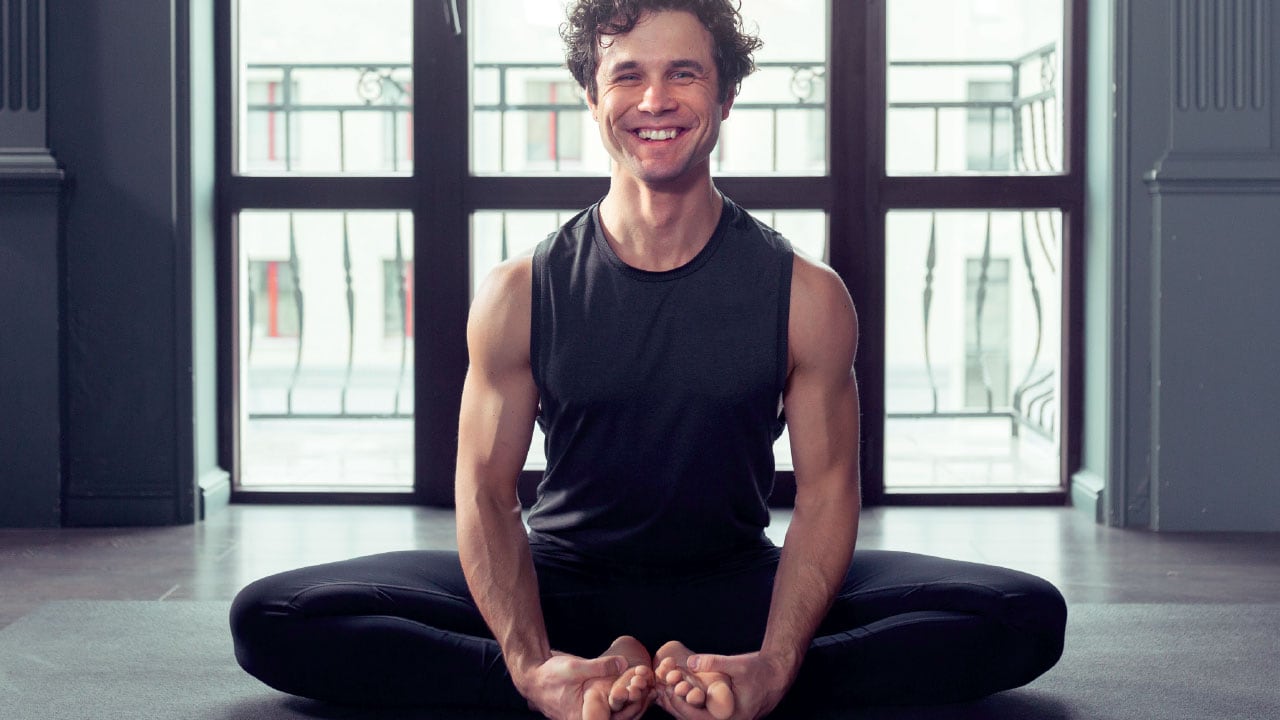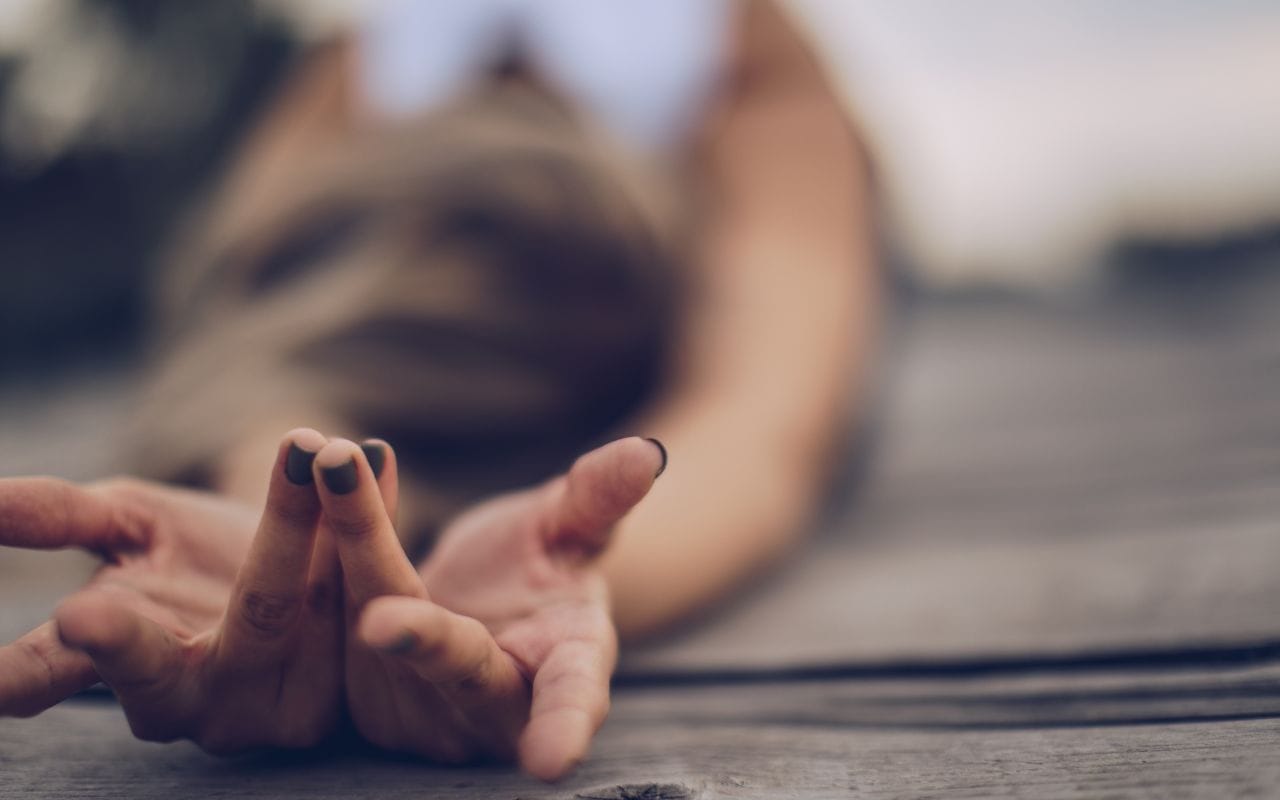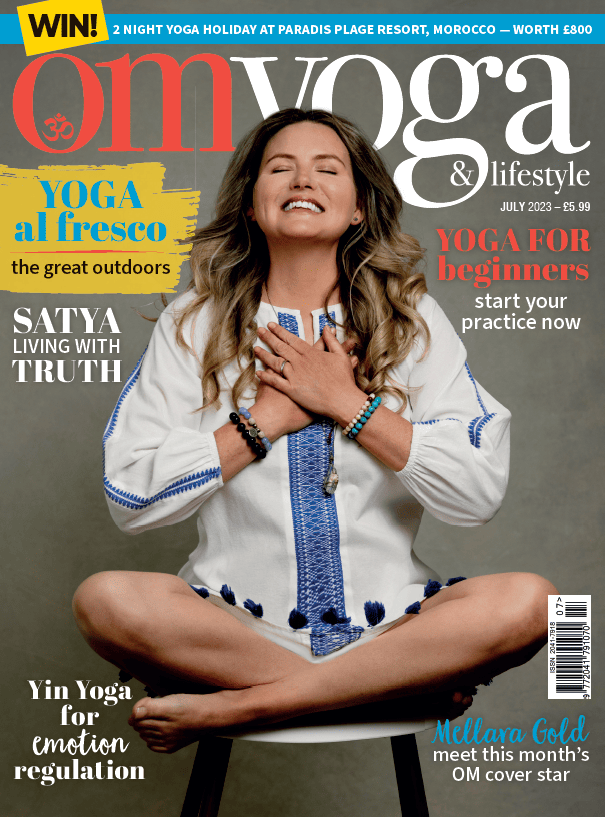
Yin yoga for emotion regulation
The use of yin yoga to support emotion regulation. By Tracey Meyers
Reading time: 5 minutes
“When we protect ourselves so we won’t feel pain, that protection becomes like armour, like armour that imprisons the softness of the heart” ~ Pema Chodron
For many of us, staying with uncomfortable sensations, whether they are experienced physically in the body (aches and pains) or as unpleasant emotions (fear, sadness, anger), feels difficult, if not downright impossible.
As a result, we try to avoid discomfort through a variety of strategies — distractions, ignoring, and blaming to name a few of my favourites! While this is completely understandable, we also lose out on developing valuable skills to help us regulate our nervous system more effectively. In addition, by frequently avoiding discomfort, we can get stuck in maladaptive patterns including addictions, phobias, and relationship conflicts.
To develop skills to manage uncomfortable sensations, we need a practice that is safe, yet challenging to begin to expand our comfort zone. Yin yoga is a wonderful way to work on expanding our comfort zone by learning how to turn toward the sensations in the body, explore whatever emotions may be present, and bring curiosity and kindness toward ourselves.
Emotion regulation
In yin yoga, we hold simple poses, largely on the floor, for one to 10 minutes, with five minutes as the typical length; this practice promotes healthy connective tissue, helps return the body to its natural range of motion, and develops mindfulness using breath and body awareness.
Because we hold poses for a substantial period, we can also use the practice of yin to explore more subtle aspects of the experience, including how we can work with uncomfortable sensations and emotions. This ability to turn toward our experience helps to lay the groundwork for what psychologists describe as ‘emotion regulation’.
Emotion regulation refers to the “processes by which we influence which emotions we have, when we have them, and how we experience and express them” (Gross, J. Emotion regulation: Affective, cognitive, and social consequences, Psychophysiology, 39, (2002), 281–291). In order to successfully regulate our emotions, psychologists believe that we need to first bring attention to our emotional state, reduce physical arousal (or over-arousal) related to our threat detection system in the body, and be able to cognitively reappraise the experience so that the situation no longer feels negative (Fustos, J. Gramann, K., Herbert, B. and Pollatos, O., On the embodiment of emotion regulation: interception awareness facilitates reappraisal. Scan (2012) 8, 911-917).

An effective practice
Yin is a particularly effective practice to begin to explore and enhance our capacity to stay with sensations and emotions because we have the opportunity in each pose to mindfully attend to what is happening, use our breath to calm regulate our nervous system, and utilise positive and compassionate inner dialogue to find more self-kindness.
To illustrate the effectiveness of a yin yoga practice for emotion regulation, we will explore taking a simple yin pose – bound angle (also known as butterfly).
From a seated position with legs outstretched, balance weight equally on both sitting bones (sitting on a blanket helps). Bend knees and slide the soles of the feet together. Move the feet slightly away from the body to form a diamond shape. Allow the knees to drop out to each side. Bend forward from the hips, finding an appropriate stretch in the hips, groin and lower back. Before moving deeper in the pose, this is where it is key to pause and take a moment to tune inside and begin what I call a ‘Sensation Inquiry’.
- Notice where the sensation is.
- Notice the intensity of the sensation (1 = no sensation/neutral; 5 = deep sensation; 10 = pain (sharp, shooting, or nerve).
- Notice qualities of the sensation (does it have shape, colour, movement?).
- Notice if the sensation changes over the duration of the pose.
Sensation inquiry
Based on what you discover here, you can respond in several different ways. You might back off if the intensity is too strong (above 5), intensify the stretch if the sensations do not provide enough interesting stimulation (below 2), or you might stay with the current level of intensity even if it is uncomfortable if the body is not in pain.
As you continue to tune into your body, you can continue inquiring into your emotions, asking yourself if there are accompanying feelings or emotions along with the physical sensation. Just like the physical sensations, you can attend to the intensity of the emotions present through gentle and supportive self-talk, such as: “I am sorry”, “This is difficult”, or “I love you”, recognising that other people feel similarly to you with “I am not alone”, and asking yourself, “What do I need in this moment to take care of myself?”
After staying in the pose for a few minutes, you can check-in again using the sensation and emotion inquiry to see if the experience has changed in any way. Then, with care, gently come out of the pose by drawing the torso up, stretching out the legs, and pausing to reflect on how you feel.
Inner experience
Doing poses in this way helps us to focus on our own inner experience as it is happening, moment by moment. Once we are truly tuned in, we can begin to self-regulate more and more especially when there is discomfort in the physical body or with disturbing emotions.
In addition to the supportive self-talk described earlier, we can also use the healing principles of yoga and psychology, including mindfulness of the breath (placing awareness on the physical sensations of breathing) to manage discomfort, soothing self-touch placing a hand on the heart or other area of the body that might need support), and loving kindness phrases (Metta), such as “May I be happy”, “May I be peaceful”, “May I be free from suffering”.
No matter which practices we choose to meet our experience of discomfort, we are developing our capacity to regulate our emotions. This becomes a doorway for handling greater challenges ‘off the mat’ as well because we are learning repeatedly how to meet ourselves with curiosity, care, and compassion.
By practicing yin yoga regularly (I recommend two or three times per week), we can create a personalised, safe, and empowering therapeutic practice that provides us with some of the most valuable tools needed to cope with life’s challenges.
Dr. Tracey Meyers is a licensed clinical psychologist, yoga teacher, yoga therapist, and the author of the new book, Yin Yoga Therapy for Mental Health (Singing Dragon). Find out more at: traceymeyerspsyd.com




